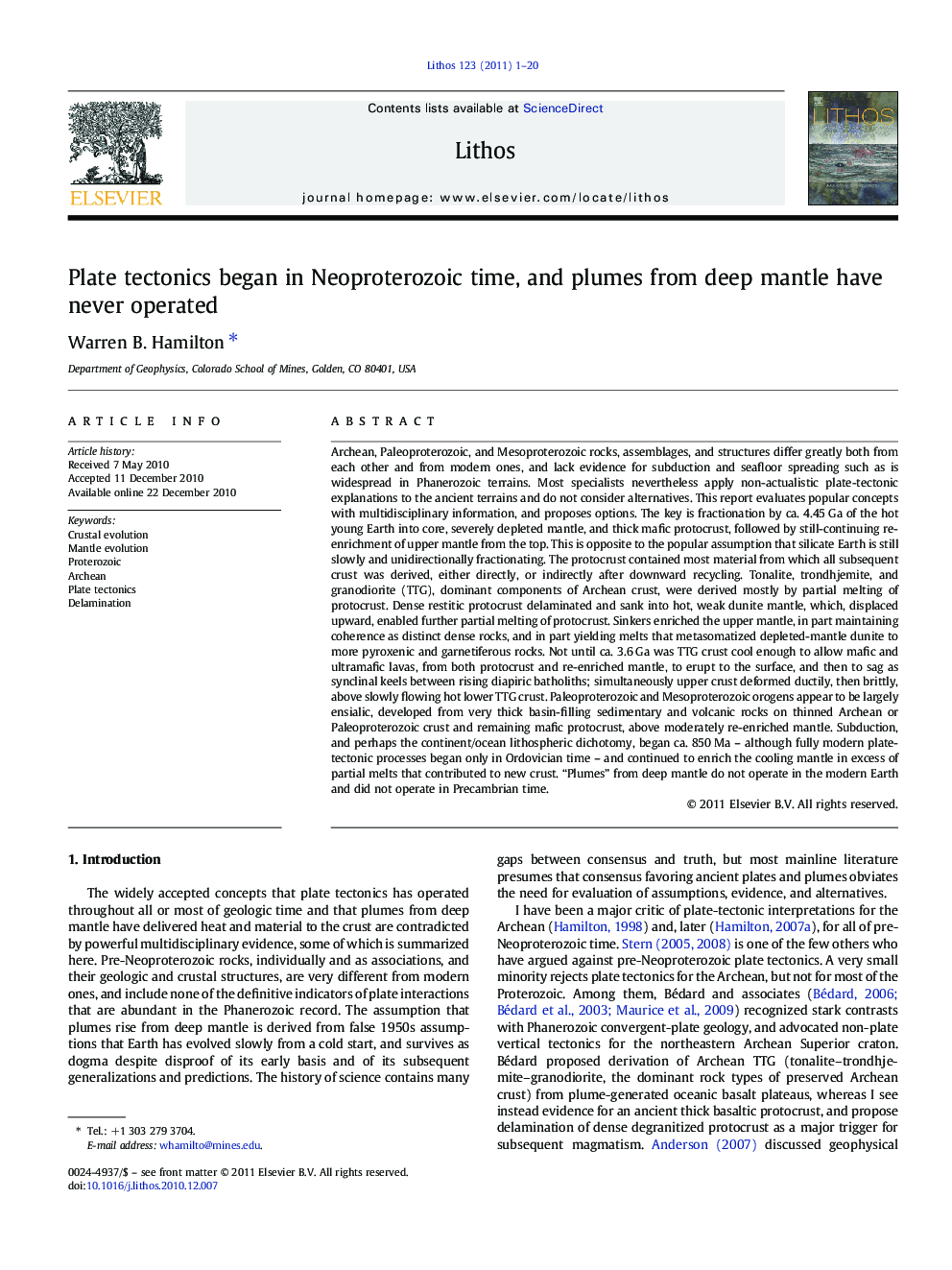| کد مقاله | کد نشریه | سال انتشار | مقاله انگلیسی | نسخه تمام متن |
|---|---|---|---|---|
| 4716783 | 1638722 | 2011 | 20 صفحه PDF | دانلود رایگان |

Archean, Paleoproterozoic, and Mesoproterozoic rocks, assemblages, and structures differ greatly both from each other and from modern ones, and lack evidence for subduction and seafloor spreading such as is widespread in Phanerozoic terrains. Most specialists nevertheless apply non-actualistic plate-tectonic explanations to the ancient terrains and do not consider alternatives. This report evaluates popular concepts with multidisciplinary information, and proposes options. The key is fractionation by ca. 4.45 Ga of the hot young Earth into core, severely depleted mantle, and thick mafic protocrust, followed by still-continuing re-enrichment of upper mantle from the top. This is opposite to the popular assumption that silicate Earth is still slowly and unidirectionally fractionating. The protocrust contained most material from which all subsequent crust was derived, either directly, or indirectly after downward recycling. Tonalite, trondhjemite, and granodiorite (TTG), dominant components of Archean crust, were derived mostly by partial melting of protocrust. Dense restitic protocrust delaminated and sank into hot, weak dunite mantle, which, displaced upward, enabled further partial melting of protocrust. Sinkers enriched the upper mantle, in part maintaining coherence as distinct dense rocks, and in part yielding melts that metasomatized depleted-mantle dunite to more pyroxenic and garnetiferous rocks. Not until ca. 3.6 Ga was TTG crust cool enough to allow mafic and ultramafic lavas, from both protocrust and re-enriched mantle, to erupt to the surface, and then to sag as synclinal keels between rising diapiric batholiths; simultaneously upper crust deformed ductily, then brittly, above slowly flowing hot lower TTG crust. Paleoproterozoic and Mesoproterozoic orogens appear to be largely ensialic, developed from very thick basin-filling sedimentary and volcanic rocks on thinned Archean or Paleoproterozoic crust and remaining mafic protocrust, above moderately re-enriched mantle. Subduction, and perhaps the continent/ocean lithospheric dichotomy, began ca. 850 Ma – although fully modern plate-tectonic processes began only in Ordovician time – and continued to enrich the cooling mantle in excess of partial melts that contributed to new crust. “Plumes” from deep mantle do not operate in the modern Earth and did not operate in Precambrian time.
Research Highlights
► Pre-Neoproterozoic crust lacks all indicators of plate tectonics.
► Thick mafic protocrust and depleted mantle fractionated before 4.4 Ga.
► “Juvenile” Archean TTG came from protocrust, not mantle.
► Paleoproterozoic and Mesoproterozoic orogens are mostly ensialic.
► Delaminates enriched upper mantle, and plate tectonics began after 850 Ma.
Journal: Lithos - Volume 123, Issues 1–4, April 2011, Pages 1–20